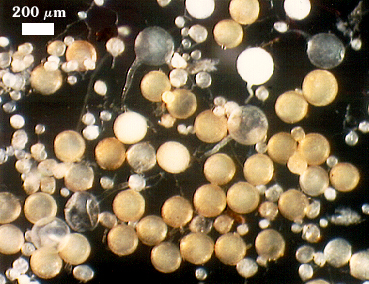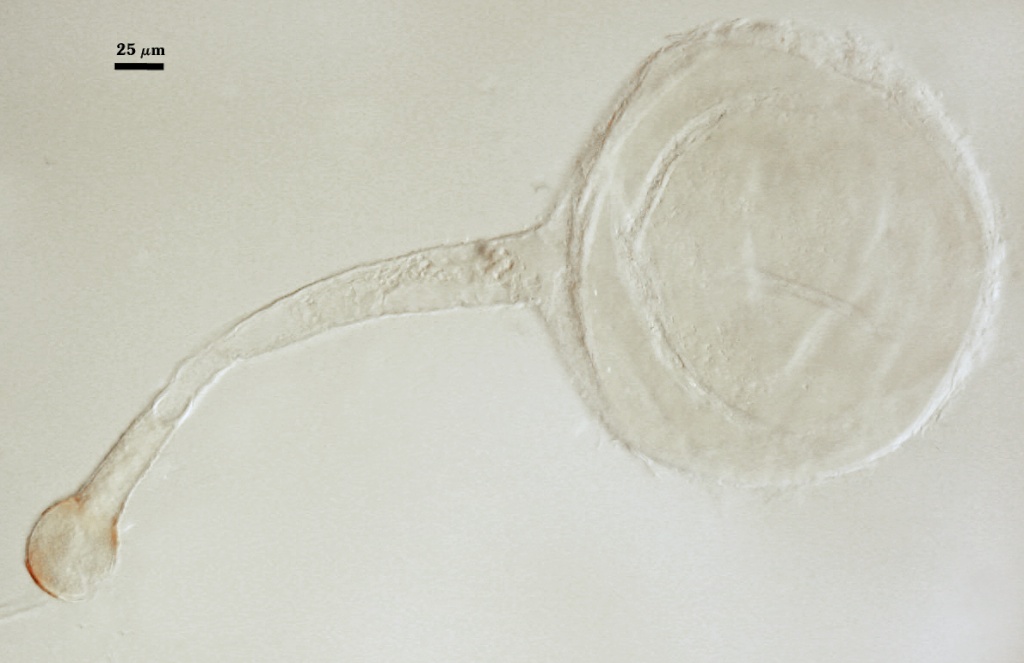Ambispora gerdemannii
(reference accession MT106)
This species is distinctly dimorphic, consistently producing both glomoid and acaulosporoid synanamorphs in three accession in INVAM. However, the proportion of each spore morphotype varies with isolate and propagation cycle.

Acaulosporoid synanamorph
This spore morphotype was first classified as Glomus gerdemannii by Rose and Trappe (1979). These authors mention the spores bore some resemblance to those of Acaulospora species, but they were unable to find saccules or other structures affirming placement in that genus. The long “pedicel” from spore to saccule neck was mistaken for a Glomus-like subtending hypha—a very easy mistake to make at that time with no foreknowledge of such a peculiar morphology. It wasn’t until this species was propagated in pot culture that it was proven to be an acaulosporoid spore type and needed reclassification.
Glomoid synanamorph
This spore morphotype was discovered only in pot cultures of the species and it was described by Morton et al. (2001). We have unpublished LSU sequences of both glomoid and acaulosporoid spores from MT106 that verifies their origination from the same organism.
Links to Gene Sequences in Genbank
Reference
- Krüger M, Krüger C, Walker C, Stockinger H, Schüssler A. 2012. Phylogenetic reference data for systematics and phylotaxonomy of arbuscular mycorrhizal fungi from phylum to species level. New Phytologist 193:970–984.
- Redecker, D., J. B. Morton, and T. D. Bruns. 2000. Ancestral lineages of arbuscular mycorrhizal fungi (Glomales). Molecular Phylogenetics and Evolution 14:276-284.
- Rose, S., B. A. Daniels, and J. M. Trappe. 1979. Glomus gerdemannii sp. nov. Mycotaxon 3:297-301.







